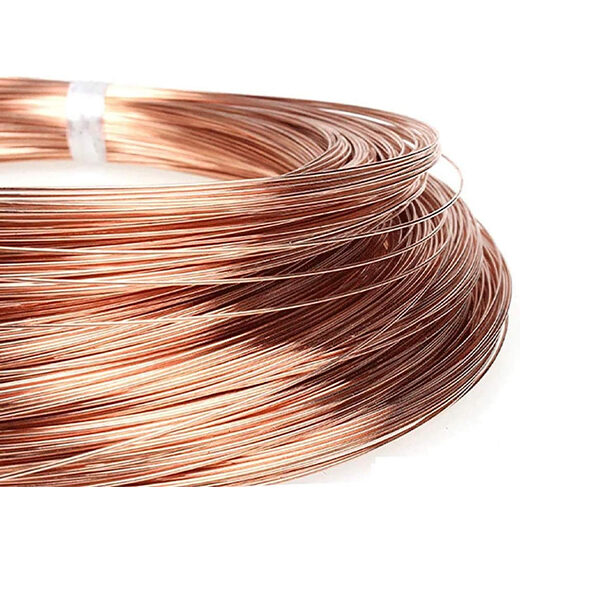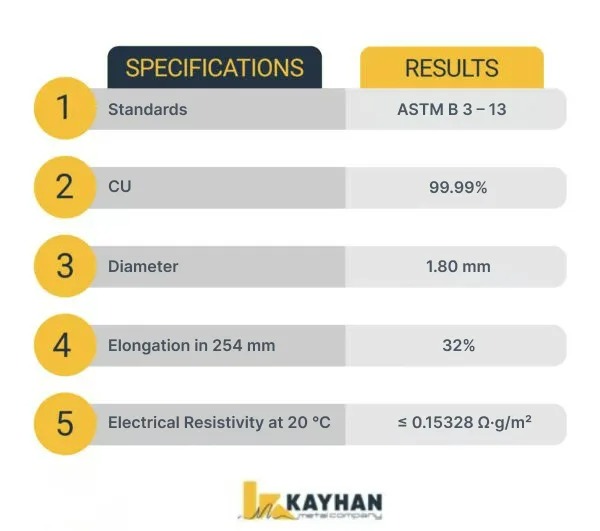Copper, a valuable and practical metal, plays an essential role in various industries such as electricity and electronics, construction and home appliance production. However, copper scrap is also found along with copper wires and pipes. These scraps, which come from wires, rods, worn parts and copper fittings, can be converted into scrap copper and recycled back into the production cycle.
Copper Scrap
The most important Applications of copper scrap:
- Regeneration of copper:
Copper scraps can be directly melted and turned into copper ingots. These ingots are used in various industries such as wire and cable production, rods, household appliances and industrial parts. Copper scrap can also be used to produce copper alloys. Brass, one of the common alloys of copper, is obtained by smelting copper with zinc and is used in the manufacture of rods, valves, containers and other accessories.
- Construction:
Copper scrap can be used to produce rebar, beam and other construction materials. Due to their strength, durability and high corrosion resistance, these materials are used in various constructions, including residential, commercial and industrial buildings. It can also be used to produce copper rods and related fittings. Due to their high thermal conductivity, these rods are used in hot and cold water roding systems as well as heating and air conditioning systems.
- Electrical and electronic industries:
Copper scraps can be used to produce high quality electrical wires and cables. These wires and cables are used for various purposes, including wiring of buildings, production of household appliances and industrial equipment, as well as power transmission lines. It can also be used to produce copper parts such as connections, terminals and printed circuit boards. These parts are used in making all kinds of electronic equipment such as computers, mobile phones and their accessories.
- Manufacturing industries:
Copper scraps can be used to produce copper parts used in various machinery, equipment and tools in manufacturing industries such as automotive, aerospace and heavy industries. It can also be used to produce copper vessels, sculptures and other decorative objects. Due to its beauty and malleability, copper is an ideal material for making such objects.
In the following, you can see the separation of different degrees of copper scrap:
- Bare bright copper: This is the highest grade of copper scrap and is the most valuable. It is clean, unalloyed, and shiny.
- Copper #1 : This grade of copper scrap is clean and unalloyed, but it may have some tarnish or oxidation. It may also include things like copper rods.
- Copper #2: This grade of copper scrap is less clean than #1 copper and may contain some impurities or insulation.
- Copper #3 : This is the lowest grade of copper scrap and is the least valuable. It may be heavily contaminated or mixed with other metals.
Types of copper scrap:
- Wire and cable: The most common type of copper waste are copper wires and cables that are used in various electrical and electronic industries.
- Rod: Copper rods used in water and sewage roding systems as well as air conditioning systems are considered as other important sources of copper waste.
- Worn parts: Worn copper parts in machinery, equipment and old household appliances can also be recycled and returned to the production cycle.
- Copper accessories: Old and unused copper dishes, statues and other decorative copper accessories are also included in the category of recyclable copper waste
Copper scrap recycling process:
The copper scrap recycling process is a crucial method for recovering valuable metals and reducing waste. Through efficient recycling, recycled copper is extracted, refined, and reused in various industries, contributing to sustainability and resource conservation. in the following, we will examine the copper recycling process.
- Collection: Copper waste is collected directly from copper-related businesses and copper factories.
- Separation: In this step, copper waste is separated from other materials and sorted.
- Grinding: Collected scrap copper is ground and turned into smaller pieces.
- Smelting: Small pieces of copper waste are melted in smelting furnaces and turned into molten copper.
- Refining: Molten copper is refined and its impurities are removed.
- Moulding: Refined copper is poured into special molds and made into various shapes such as ingots, 8 mm wire, pipes and copper wires.
Reviews
There are no reviews yet.





Reviews
There are no reviews yet.